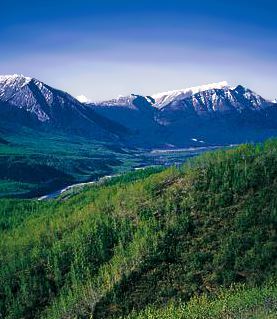 The Earth lost fewer trees in the last decade as global deforestation over the past ten years fell by more than 18 percent, according to the UN’s Global Forest Resources Assessment 2010.
The Earth lost fewer trees in the last decade as global deforestation over the past ten years fell by more than 18 percent, according to the UN’s Global Forest Resources Assessment 2010.
Between 2000 and 2010, about 50,000 square miles (13mil hectares) of forests each year were converted to other uses or lost through natural causes, as compared to around 61,800 sq. miles (16mil hectares) per year during the 1990s, say the key findings of the Food And Agriculture Organization’s most comprehensive forest review to date, which studied 233 countries.
Planting of new forests has significantly reduced net loss of forests
Brazil and Indonesia, which had the highest loss of forests in the 1990s, have significantly reduced their deforestation rates. In addition, ambitious tree planting programs in countries such as China, India, the United States and Viet Nam – combined with natural expansion of forests in some regions – have added more than 27,000 sq. miles (7mil hectares) of new forests annually. As a result the net loss of forest area was reduced to 20,000 sq. miles (5.2 mil hectares) per year between 2000 and 2010, down from 32,000 sq. miles (8.3 mil hectares) annually in the 1990s.
The world’s total forest area is more than 15 million sq. milies (4bil hectares) or 31 percent of the total land area.
Biggest Losses in South America, Africa
South America and Africa had the highest net annual loss of forests in 2000-2010, with four and 3.4 million hectares respectively.
Asia, on the other hand, registered a net gain, planting some 8,500 sq. miles (2.2 mil hectares) of trees on average per year in the last decade, mainly in China, India and Viet Nam, which have doubled their forest area every year since 2005.
In North and Central America, the forest area remained fairly stable, while in Europe it continued to expand, although at a slower rate than previously.
“For the first time, we are able to show that the rate of deforestation has decreased globally as a result of concerted efforts,” said Eduardo Rojas, Assistant Director-General of FAO’s Forestry Department.
“Not only have countries improved their forest policies and legislation, they have also allocated forests for use by local communities and indigenous peoples and for the conservation of biological diversity and other environmental functions. This is a very welcoming message in 2010 – the International Year of Biodiversity,” said Rojas.
“However, the rate of deforestation is still very high in many countries and the area of primary forest – forests undisturbed by human activity – continues to decrease, so countries must further strengthen their efforts to better conserve and manage them”, he added.
Forests and climate change
Forests play an important part in climate change mitigation. Forests store a vast amount of carbon. When a forest is cut down and converted to another use, carbon is released back into the atmosphere.
“A lower deforestation rate and the establishment of new forests have helped bring down the high level of carbon emissions from forests caused by deforestation and forest degradation”, said Mette Løyche Wilkie, the Coordinator of the Assessment.
FAO’s Global Forest Resources Assessments are published every five years. More than 900 specialists from 178 countries were involved in the Global Forest Resources Assessment 2010. The full report of this Assessment will be released in October 2010.
(More Findings at FAO)



















